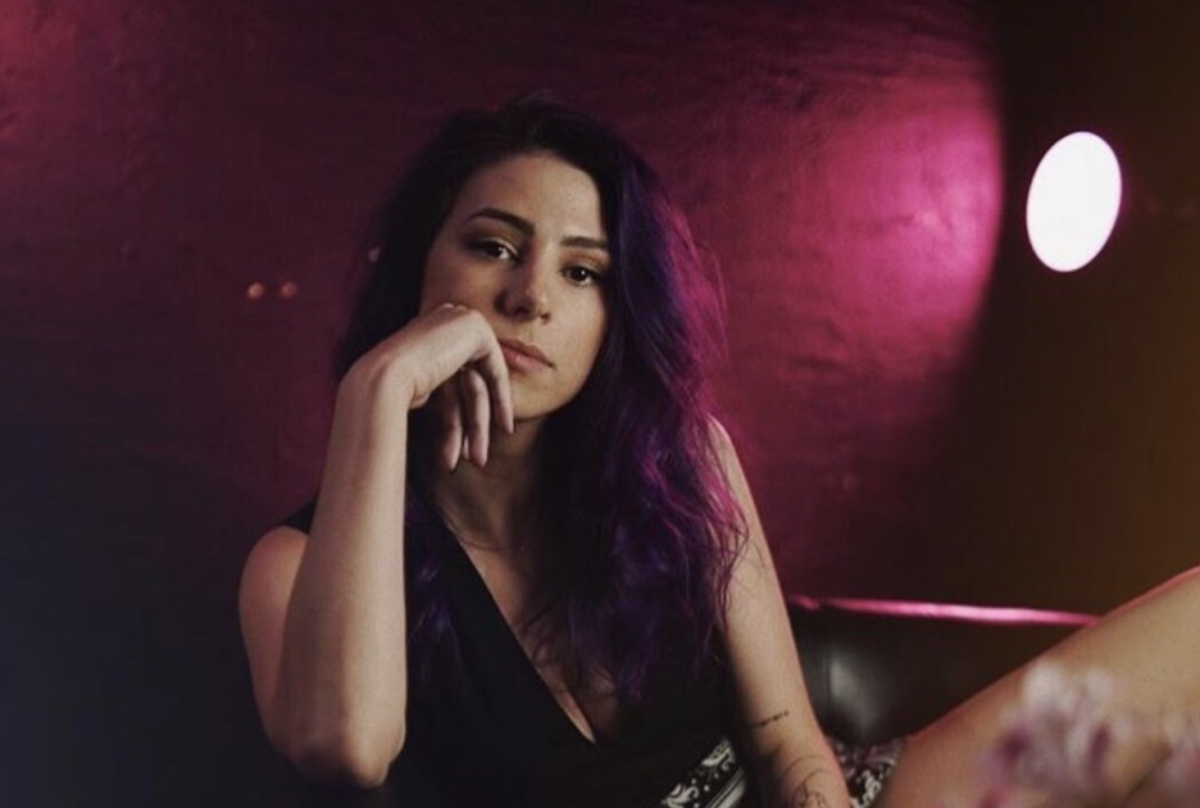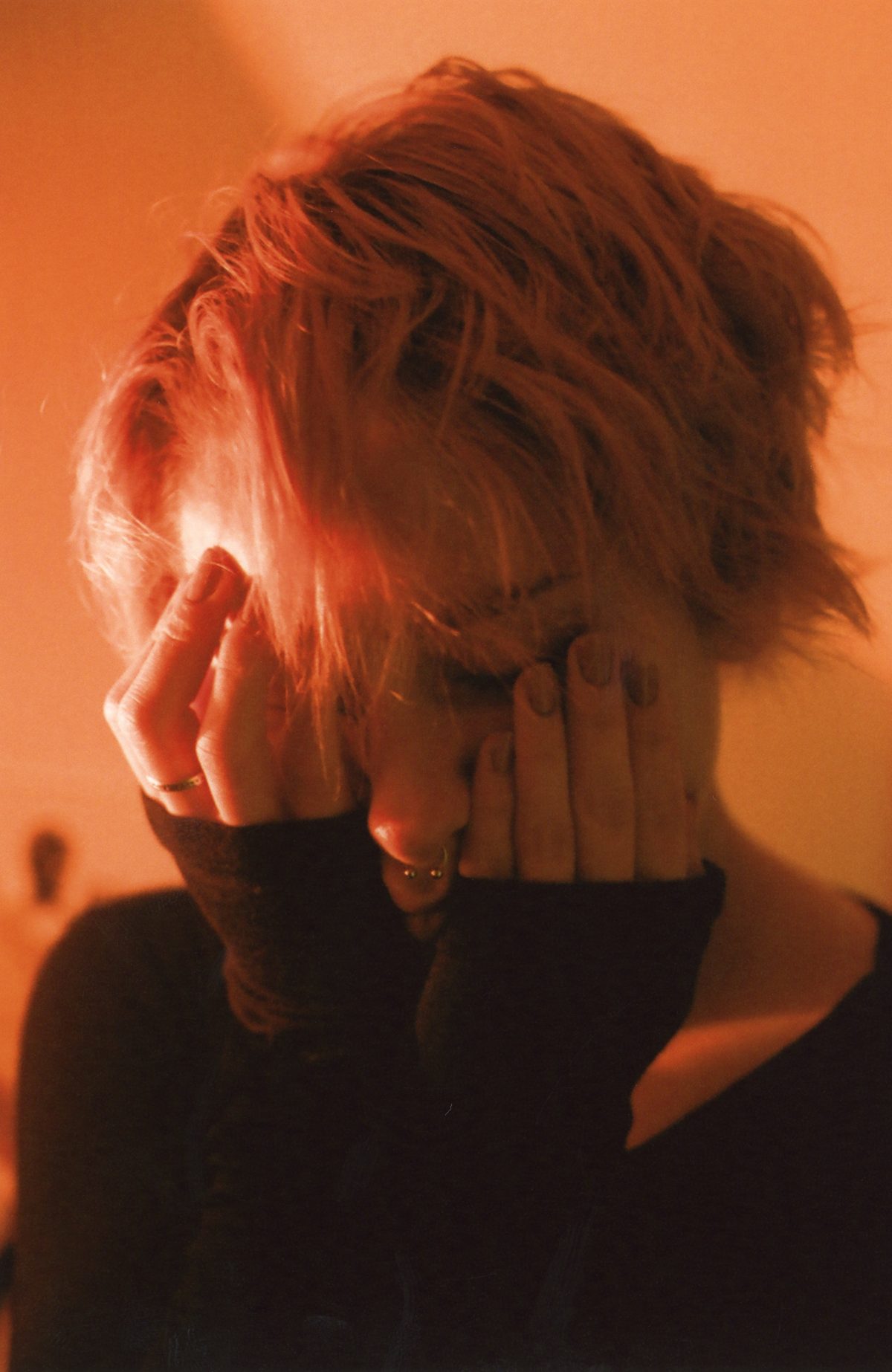Stevie Boebi is a queer Youtube personality who gained popularity through her candidness regarding sex, identity, and sexuality. Recently, Stevie has come out as polyamorous, which is a term that typically raises eyebrows. It’s often conflated with polygamy — the practice of having more than one husband or wife — and is usually accompanied by assumptions of religious oppression, etc. This jaded take couldn’t be further from the truth.
In order to debunk some myths and stereotypes surrounding polyamory, Stevie agreed to sit for an interview to shed some light on her lifestyle and identity. The following is an edited transcript of our conversation.
I’m just gonna jump right into it. How did you even know you were poly?
Stevie: Even though most of my relationships since I was like nineteen have not been monogamous, I didn’t personally identify as poly until about a year ago. It’s not necessarily that you are in multiple relationships at one time. It just means you have the capacity to love more than one person at a time. And [after reading more about polyamory] I knew for sure that I had/have that capacity.
Now the fact that I’m poly doesn’t necessarily mean that I don’t want an exclusive relationship or that [my partnerships] need to look one certain way. I think relationship dynamics are so diverse, just like anything else.
I started identifying as polyamorous about a year ago because — the reason I do anything — I was mad. *laughs* I broke up with an ex because I had a crush on someone else and thought that meant that I wasn’t in love with her anymore. [And I hadn’t actually fallen out of love with her] so it can ruin people’s lives to have that damaging view that to have a crush on someone else inherently means that you don’t love your [current] partner — because it’s just not true.
A year is really recent, there’s a lot to discover in that time frame. Have you figured out a way to navigate having multiple partners?
I [previously] identified as “monogamish.” I’m attracted to the skills and the values and the outlook that polyamorous people have. So I tend to date polyamorous people that have or desire multiple relationships. For me, it was more like my polyamory inspired me to learn how to talk about [these desires] and how to teach people. That’s kind of the awakening that I’ve had this year.
People who identify as poly can have as many partners as they want, have you thought about how many people would be too much for you?
So [for] having too many partners the term is poly-saturated. Sometimes polyamorous people have to be like, ‘I’m at my full level of partners. I don’t have emotional energy for this shit.’ But I don’t really notice most polyamorous people having a shit ton of partners. It’s usually like one to three partners, as far as [poly] people I know. Whatever works for you and whatever makes you happy.
There are also people called solo poly, who don’t want a companion partner. Some people also call this primary partners — people you would have a house with, or someone you would get married to or have dogs or babies or whatever with — solo poly people want to live on their own have their own house. They want partners but they don’t want a companionship type of relationship. Most solo poly people that I’ve talked to or heard from tend to have a little more partners number-wise than poly people that want companion partners.
How do you feel about current poly representation?
I feel bad about it. *laughs* But at the same time all of my identities are underrepresented. So it’s like, yeah would I love to see a queer poly love story, but it’s more important to have queer people of color represented, and it’s more important to have people that are obviously disabled being represented in love stories, too.
I [shouldn’t] say one is more important than the other, but I just think there is a lot of bad representation and inaccurate and unhealthy portrayals of polyamory, so I would love to see that combated. But you know… there is a lot of unhealthy shit in every love story because it creates drama.
Yeah, the only poly anything I’ve ever seen is that show on HBO — or was it Showtime…?
Was it the one that was like “Look at these weirdos who have children with multiple partners” — is that what it was?
I don’t remember the name of it [editor’s note: it was Polyamory on Showtime]. But I just remember watching it and thinking to myself, this is all about sex… you aren’t telling us anything revolutionary or truthful about polyamory.
So I think teaching the difference between swingers and polyamorous people is really important, because most polyamorous people do not go to swinger parties. I mean, maybe they do. But those two communities are different from each other. Polyamory is about love. It’s not about sex.
The question of jealousy comes up when you’re talking about polyamory. How do you navigate jealousy whether it’s coming from a partner or vice versa?
If jealousy affects you, it affects you — it doesn’t matter if you’re dating a poly person or a monogamous person. Jealously is something that, if you struggle with it, you’re going to struggle with it. It’s an emotion that belongs to you and not necessarily your partner. Polyamory isn’t about settling for being neglected [or] getting everything you want out of a partner. If you have three partners and [each of them is] not getting what they want from you — that’s not successful polyamory, you know what I mean?
But your partner can’t help you with your jealousy, that’s something that has to come from within you.
That’s a journey you have to take regardless of if you’re in a monogamous or poly relationship. Do you think monogamy is innate or do you think it’s socialized?
That is a huge question and I’m not an expert. I have no idea. But the way that we view monogamy now is a relatively new idea outside of religious circles so it’s like, is it [innate]?
But I know people who have told me how they feel about love, and when they are in love they are completely blind to anyone else. They can’t have crushes on anyone. I know couples where one of them is poly and the other is monogamous and so [while] it would be completely fine for them to have other partners, they are just like, “I’m literally not interested. I’m physically and mentally emotionally incapable of this thing and I’m completely fine with it.”
So yeah, I think that if you’re monogamous, you’re monogamous. And if you’re not, you’re not. Neither of those parties should ever feel guilty for having the capacity to love more than one person or having only the capacity to love one person.
[Earlier in the interview, Stevie referred to herself as being disabled] I just want to give you the floor to inform and share with us what you’ve been going through.
So I have a genetic condition called Ehlers-Danlos Syndrome and it is genetic. I was born with it, and it just means that my DNA doesn’t know how to make collagen right. It has the wrong recipe to make collagen and collagen affects everything in my whole body. There are unofficially twenty types of EDS, I have type 3 which is also called hyper-mobility type. So people with EDS have such varying symptoms and conditions, nobody really looks exactly the same as far as what they’re symptoms are.
This just means that I’m hyper-flexible and it hurts *laughs* and parts of my body just don’t wanna work a lot of the time.
So a lot of joint issues right?
Yeah, all of your tendons and ligaments have collagen in them, so I can be like a contortionist if I want to.
Is this like when you would see kids in school and they would be double-jointed?
There’s something called HSD [hyper-mobile spectrum disorder] and then there’s EDS, which is genetic. To be diagnosed with either one of those, you have to meet a bunch of different diagnostic criteria, and being hyper-mobile isn’t the only criteria. You basically do all of these weird contortionist things with your body, and for each one that you can do, you get a point. So kids that can twist their elbow around, you know, they might only have a certain amount of points out of nine — I have all nine.
That’s intense.
My type of EDS is the only one that doesn’t have a genetic marker yet. They just updated the diagnostic criteria, and they are hoping to study everybody’s DNA that actually fits the new criteria. It’s considered a rare disorder, so I have to teach my doctors that even though I may look fine — I’m not.
How did you come to the conclusion you has Ehlers-Danlos Syndrome?
For most people that have EDS, it takes something bad happening to even know that they have it. People with EDS have a wild range of different things that can happen. Some people have heart problems, some people have digestive problems, some people just start fainting all of the time — that was me.
I just got diagnosed in October, but I think what happened was my adrenal glands got really fatigued and just like gave up because my body was just going on adrenaline. I was sleeping twenty hours a day, I lost 40 pounds and I would pass out anytime I would stand up. I was really ill and doctors kept telling me I was depressed and to go home because I didn’t have insurance. I couldn’t work, I was like living in poverty. [Doctors] would be like “Oh, it’s her again, send her home” type of thing.
It would get worse and then it would get better, and then it would get worse and I was like, what the hell is this? It’s been about 8 years since first getting really sick. Now, thankfully, I know what it is and the more I learn about it, the more it explains everything.
Obviously it’s not like, “Yay, I have a disability!” but now it has a name. It feels so good to be like that’s my blood vessels not constricting, you know? Just having a reason for why things happen — that calms me. I think a lot of people are sick and misdiagnosed with things like fibromyalgia, even people that have ME [myalgic encephalomyelitis] or chronic fatigue syndrome — they’re misdiagnosed with all kinds of shit . Particularly women of color or people that have any kind of mental illness. They just aren’t taken seriously by doctors and it’s fucked up. I’m real angry about it.
How would you say your disability has affected your sex life?
Obviously, in a lot of ways because it affects literally every single thing that I do. My disability is degenerative, so it will get worse over time and my pain will get worse over time. I have developed coping mechanisms to help me deal with that, and I’m still trying to diagnose and figure out what’s going on.
I thought I had anxiety for a real long time, but I don’t really. I have something called Postural Orthostatic Tachycardia Syndrome [PoTS, a blood volume condition that causes lightheadedness, fainting, and rapid heartbeat when one stands after sitting or laying down]. I was getting too anxious during sexual encounters and I was like, “It’s because I have anxiety” when really it’s because I’ve been standing up for too long. Like sit the fuck down, be a bottom — you are fine.
Back to polyamory. What would you say to young poly people who are questioning [themselves] or are curious?
The biggest thing that blew my mind, and blows everyone else mind when I tell them, is that being polyamorous is not that you are demanding to have multiple partners — it’s that you have the capacity to love more than one person. No one deserves to be made to feel bad about how they feel.
To learn more about polyamory, you can visit here. To learn more about Ehlers-Danlos Syndrome, click here or talk to a medical professional.
You can follow Stevie Boebi on Youtube and Instagram.
Photos (in order of appearance) by Sarah Snow, Jairo Granados, and Kate Phillips.



